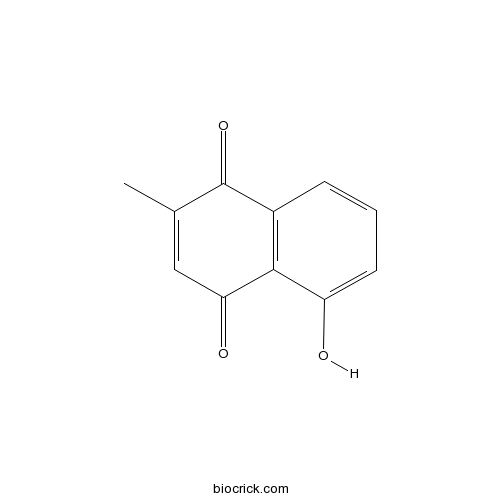Plumbago zeylanica
Plumbago zeylanica
1. The products in our compound library are selected from thousands of unique natural products; 2. It has the characteristics of diverse structure, diverse sources and wide coverage of activities; 3. Provide information on the activity of products from major journals, patents and research reports around the world, providing theoretical direction and research basis for further research and screening; 4. Free combination according to the type, source, target and disease of natural product; 5. The compound powder is placed in a covered tube and then discharged into a 10 x 10 cryostat; 6. Transport in ice pack or dry ice pack. Please store it at -20 °C as soon as possible after receiving the product, and use it as soon as possible after opening.
Natural products/compounds from Plumbago zeylanica
- Cat.No. Product Name CAS Number COA
-
BCN2586
Plumbagin481-42-5
Instructions

Plumbagin ameliorates hepatic ischemia-reperfusion injury in rats: Role of high mobility group box 1 in inflammation, oxidative stress and apoptosis.[Pubmed: 29990872]
Ischemia-reperfusion (I/R) injury is a pathological process which magnifies with the ensuing inflammatory response and endures with the increase of oxidants especially during reperfusion. The present study was conducted to assess the possible modulatory effects of plumbagin, the active constituent extracted from the roots of traditional medicinal plant Plumbago zeylanica L., on the dire role of high mobility group box 1 (HMGB1) as well as the associated inflammation, oxidative stress and apoptotic cell death following hepatic I/R. Four groups of rats were included: sham-operated, sham-operated treated with plumbagin, I/R (30 min ischemia and 1 h reperfusion) and I/R treated with plumbagin. Pretreatment with plumbagin markedly improved hepatic function and structural integrity compared to the I/R group, as manifested by depressed plasma transaminases and lactate dehydrogenase (LDH) activities as well as alleviated tissue pathological lesions. Plumbagin prominently hampered HMGB1 expression and subsequently quelled inflammatory cascades, as nuclear factor κB (NF-κB), tumor necrosis factor-alpha (TNF-α) and myeloperoxidase (MPO) activity. It also interrupted reactive oxygen species (ROS)-HMGB1loop as evident by restored liver reduced glutathione (GSH), elevated glutathione peroxidase (GPx) activity, along with decreased liver lipid peroxidation. Simultaneously, plumbagin significantly ameliorated apoptosis by amending the mRNA expressions of both anti-apoptotic (Bcl-2) and pro-apoptotic (Bax). The present results revealed that plumbagin is endowed with hepatoprotective activity ascribed to its antioxidant, anti-inflammatory and anti-apoptotic properties which are partially mediated through dampening of HMGB1 expression.
Current development in novel drug delivery systems of bioactive molecule plumbagin.[Pubmed: 29298523]
Plumbagin (PLB), a member of the quinine family, mainly found in the plant Plumbago zeylanica Linn., potentially exhibit anticancer, anti-inflammatory, anti-oxidant, antifungal, neuroprotective, hypolipidemic and antibacterial activities. However, it has been well known that the application of PLB was limited owing to its water insolubility, instability and poor bioavailability. For decades, many attempts have been made to compensate for these disadvantages with the development of improved delivery platforms as the feasible approaches. This review aims to describe the various studies supporting the biopharmaceutical aspects of PLB. In addition, it includes a section devoted to discussing the challenges associated with the drug and strategies to improve the properties of PLB such as solubility, stability and bioavailability. Also, this paper summarizes the recent works on the design and development of novel delivery systems of PLB such as liposomes, niosomes, microsphares, nanoparticles, micelles, complexization, metal nanoparticles, crystals modification, etc., with the goal of harnessing the true difficulties of this multifunctional agent in the clinical arena.


